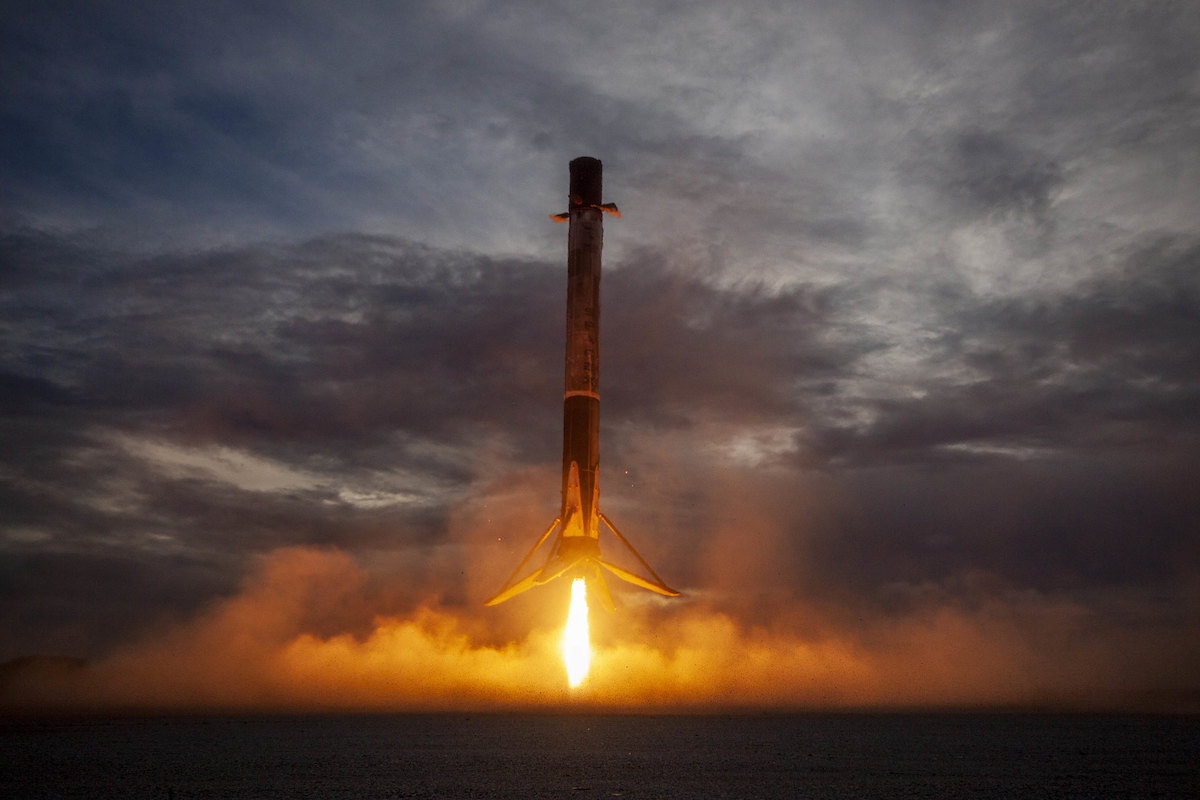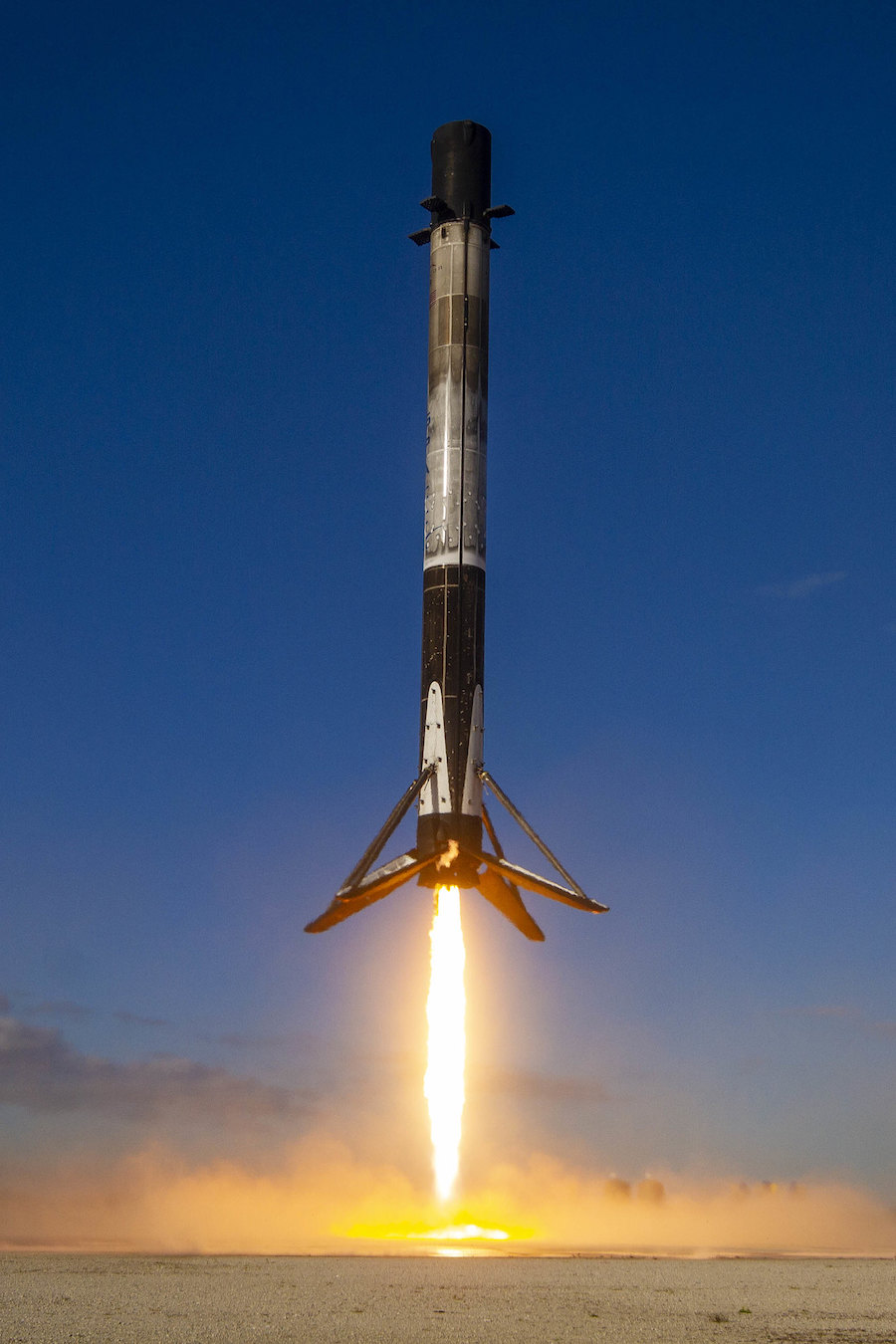
SpaceX is scheduled to launch a Falcon 9 rocket on a southerly coast-hugging trajectory from Cape Canaveral Tuesday to place 88 small satellites into a polar orbit. The Falcon 9’s first stage booster will return to Florida’s Space Coast for the first onshore rocket landing at Cape Canaveral since December.
The Falcon 9 rocket is set to take off from pad 40 at Cape Canaveral during a 58-minute launch window opening at 2:56 p.m. EDT (1856 GMT) Tuesday. SpaceX postponed the launch from last week to perform additional additional pre-flight checkouts, but the company did not offer any further explanation for the delay.
SpaceX test-fired a previously-flown Falcon 9 booster last Tuesday in preparation for the Transporter 2 small satellite rideshare mission.
There’s an 80% chance of acceptable weather at Cape Canaveral for launch Tuesday.
According to SpaceX, the Transporter 2 mission will launch 88 small spacecraft to orbit for customers around the world. SpaceX’s first dedicated rideshare mission, Transporter 1, launched in January with 143 small satellites, a record number of individual spacecraft on a single launch.
The Transporter 2 mission won’t break that record, but SpaceX said the customer spacecraft awaiting liftoff Tuesday have a combined mass greater than that of the previous rideshare mission.
The payloads aboard Transporter 2 include small satellites for the U.S. military, plus radar and optical Earth observation satellites for Satellogic and ICEYE, commercial remote sensing companies based in Argentina and Finland. There are also numerous CubeSats on-board the launch for U.S. and international operators.
The launch Friday will be the 20th Falcon 9 launch of the year, but all 19 of the missions so far in 2021 have aimed for landings on drone ships in the Atlantic Ocean. SpaceX’s last rocket landing at Cape Canaveral Space Force Station occurred on the company’s final mission of 2020, a launch for the National Reconnaissance Office on Dec. 19.
All but one of SpaceX’s booster landing attempts this year have been successful.
SpaceX typically lands Falcon 9 boosters on drone ships on missions carrying heavy cargo into space, or flights hauling payloads to high-altitude orbits.
On launches with lighter payloads, the booster has enough of a propellant reserve to turn itself around using a “boost-back” burn just after stage separation. That will be the case on the Transporter 2 launch Tuesday.
After separating from the Falcon 9 upper stage about two-and-a-half minutes into the mission, the 15-story-tall booster will reignite three of its engines to zero out its horizontal velocity and begin accelerating back toward Landing Zone 1 at Cape Canaveral.
The first stage will land back at Cape Canaveral around eight minutes after liftoff, while the Falcon 9’s second stage performs a “dog-leg” maneuver to change its course from an initial path southeast to a southerly track roughly parallel to Florida’s east coast.
The second stage will soar over the Florida Straits and Cuba before reaching orbit what the 88 rideshare payloads.
This will be the third SpaceX launch from Cape Canaveral to use the southerly polar launch trajectory since last August. Before August, the polar launch trajectory had not been used from Cape Canaveral since 1969.
SpaceX said the returning rocket stage could generate one or more sonic booms that could be heard across Central Florida, depending on weather conditions.

The propulsive booster landing will mark the 20th touchdown of a Falcon 9 first stage at Cape Canaveral Space Force Station, and the 89th recovery of a Falcon 9 booster overall. There have been 66 successful booster landings on SpaceX’s fleet of drone ships, and three rocket landings at Vandenberg Space Force Base, California.
“Additionally, Falcon 9 will fly along Florida’s eastern coast over the ocean and may be visible from the ground,” SpaceX said in a statement.
The Falcon 9’s upper stage will deliver the 88 spacecraft into a sun-synchronous orbit at an altitude of about 326 miles (525 kilometers), setting the stage for a carefully-choreographed payload deployment sequence.
SpaceX announced its small satellite rideshare launch service in 2019. Following Transporter 1 in January and Transporter 2 this week, SpaceX’s next dedicated rideshare launch, Transporter 3, is tentatively scheduled to launch in December from Vandenberg, located on California’s Central Coast.
On its website, SpaceX says it charges customers as little as $1 million to launch a payload of 440 pounds (200 kilograms) on a dedicated rideshare flight to sun-synchronous orbit. Enabled by cost reductions from reusing Falcon 9 rocket hardware, the SpaceX prices are significantly less than the rate charged by any other launch provider for a payload of similar mass.
“These launches are very cost-efficient, the cheapest to date,” said Jeanne Medvedeva, vice president of launch services at Berlin-based Exolaunch, in an interview earlier this year.
Companies like Exolaunch reserved ports on the Transporter 1 and Transporter 2 payload stacks, then divided that capacity among multiple small satellite customers. Spaceflight, based in Seattle, and the Italian company D-Orbit also booked capacity on the Transporter 2 launch, then divvied their slots among their customers.
Spaceflight and D-Orbit have their own satellite carriers mounted on the Transporter 2 payload stack. Their vehicles will separate from the Falcon 9 rocket to later release their satellite passengers.
Email the author.
Follow Stephen Clark on Twitter: @StephenClark1.
